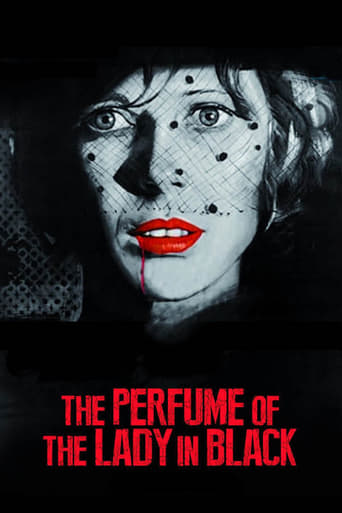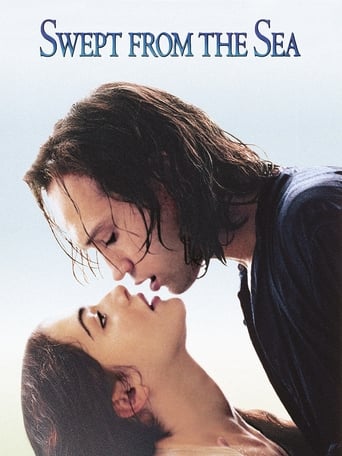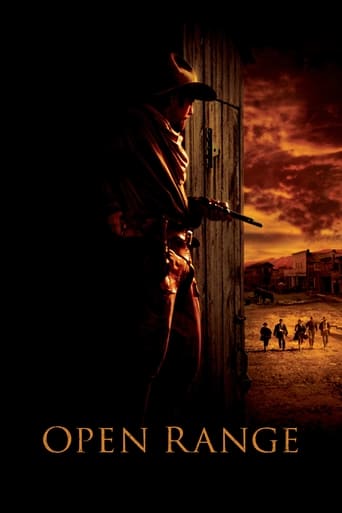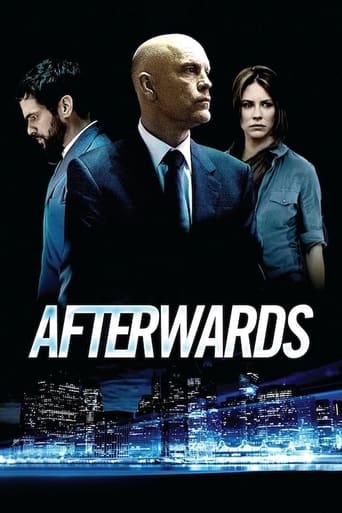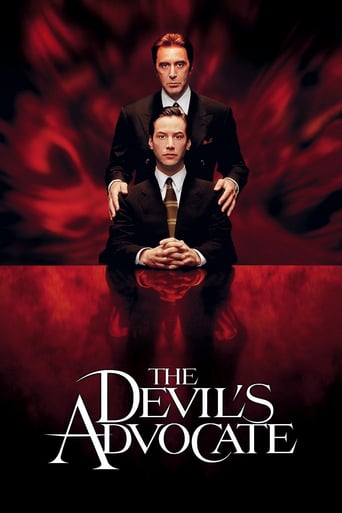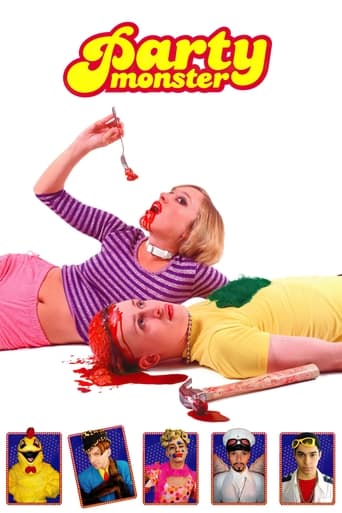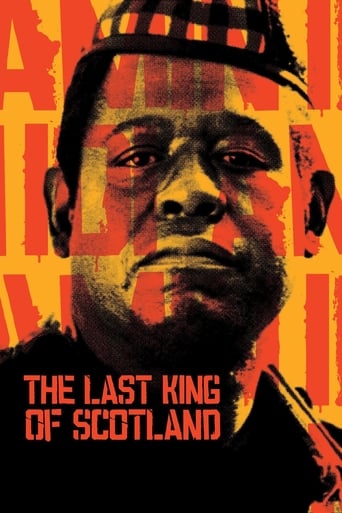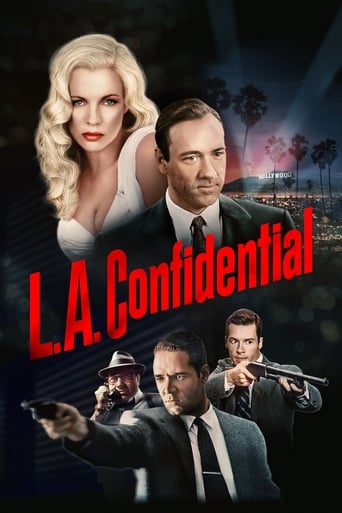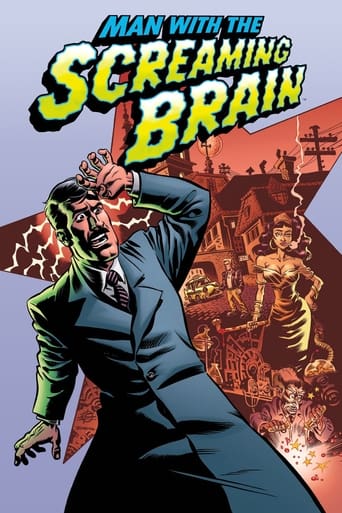The Perfume of the Lady in Black (1974)
Sylvia, an industrial scientist, is troubled by strange hallucinations related to the tragic suicide of her mother.
Watch Trailer
Cast


Similar titles
Reviews
Pale, dull and straightforward imitation of "Rosemary's Baby" (mystical part of the plot and conclusion). But even stranger - 1976's "Le Locataire" idea of insanity and illusions have a lot in common with this italian flic. But Polansky's movie stay strong, while this movie ruins apart after 30 min or so. And the ending is weakest spot. It's too much predictable (if you saw "Rosemary's Baby" before): in "Rosemary" there was satanic cult, and "Il profumo della signora in nero" has sacrifice/prey themes in it's core. So finale is obvious, when you start to realise WHICH movie inspired authors of this oldie italian flic.
For those who have seen more than one giallo on their watch, please save yourself the time. If you must know what the hub-bub is truly about, I will release spoilers later in the review.To get right to the underlying reason for watching these kinds of films, Mimsy gets naked twice: once briefly in a fairly rapid love making scene (where the camera likes to pan away) and at the very end with the "surprise" twistish ending. The murders don't really happen until the 1:20 mark, and there is no real gore to speak of until the very end, so be prepared for a very LONG wait for anything to happen.By the way, did I mention that this film is very dull? When I see words like "hypnotic" and "dreamlike" popping up when describing any film, they seem to be code for "drawn out" or "putting me to sleep".The plot goes something like this: Mimsy Farmer is a technician at a factory (either producing chemicals or beer, I couldn't tell which), who has frequent nightmares about her childhood and her mother (particularly how she died). In the course of this, she has a meeting with her boyfriend and some friends of his, some of whom appear to be dignitaries from Africa who converse about the dawning of science over witchcraft. As the story progresses, Mimsy's mental health starts to deteriorate as she begins to see a little girl who looks strangely like herself at the same age, as well as her mother in mirrors and the like. By the end of it, she is dressing like her mother and has gone quite mad, killing her boyfriend, the elderly scholar who resided beside her and her mother's former lover. It is revealed that Mimsy interrupted her mother having intercourse with the "lover" (or payee, if you know what I mean) and killed her own mother by pushing her out a window...thus, over time, the guilt (and maybe a little bit of shamanistic help from the aforementioned African dignitaries) pushed her over the edge quite literally.Yet, while one could consider this to be a proper ending for the main character, it is further revealed that the 3 people she killed are indeed still alive (which I am guessing the entire sequence was "in her head"), and they proceed to take her body to an underground tunnel, where everyone given any screen time in the movie participates in a cannibalistic ritual, with her boyfriend gutting her and the rest lining up to pull out a piece to eat.Now I can respect the visual aspect of the last shot, which (other than the Mimsy nudity) is the only saving grace of the film. Otherwise (as a friend put it tonight after finishing the film), "that's a pretty convoluted way to get your dinner".All in all, I was just too bored in the end to care about either twist, as I could see the "Mimsy dying the same way her mother did" ending the moment the method was revealed, and the cannibal ritual stuff was never dealt with very well to the degree that it felt tacked onto the main story.
The lovely, slender, gap-toothed blonde beauty Mimsy ("More," "Autopsy") Famer gives a splendid, shattering, heart-breaking performance as Sylvia, a shy, passive and very reserved lass who suddenly starts to lose her marbles. Sylvia experiences troubling childhood flashbacks entailing a time she caught her mother doing just what you think with some other guy (she killed her mom and cut the dude up with a knife), sees and talks to an impish, ghostly manifestation of herself as a little girl, sees mommy's reflection in a mirror, and gruesomely offs several folks living in the apartment building she resides in (one woman is boiled alive in her bath tub, a kindly old man gets hacked up with a hatchet, Sylvia later plants said hatchet in her useless boyfriend's back, and so on). Is Sylvia really going murderously around the bend? Or is something more sinister and mysterious afoot here? As one might surmise from the above synopsis, "The Perfume of A Lady in Black" sure ain't your average, straight-down-the-line safe, conventional and predictable humdrum terror-tinged mystery thriller; instead it's an extremely surreal, disorienting, surprise-laden inside out edge-of-your-seat "Repulsion"-style psychological mind-twister flick that in its own deceptively bent and low-key way proves to be one exceptionally powerful and disturbing scarefest. Francesco Barilli's steady, subdued direction potently evokes a pungent, nerve-rattling sense of genuine menace from every objects and places (a mirror, a vase, a gorgeously verdant open field, a music box), upsetting the viewer's equilibrium by showing how the serenity of plain old everyday life can be easily disrupted and completed ripped asunder. Nicola Piovani's eerie, elegant, atmospheric score and Mario Masini's beautifully graceful cinematography (the fluid, stately tracking shots are simply breathtaking) significantly contribute to the film's spooky, strange, nothing-is-what-it-appears-to-be enigmatic and ultra-paranoid mood. The jolting and unexpected stinger of a brutal ending packs one hell of a ferocious punch. Offbeat, oblique and often unsettling, this first-rate shocker gets my highest possible recommendation.
Contains spoilers.Barilli, main character in Before the Revolution (B Bertolucci , 1964) , basically directed just another film after this one, plus one episode in a 1991 film ("La Domenica Specialmente") He is more of a painter ( you could not have missed the painting on the wall of Silvia's room in this Italian cult gem: Il Profumo Della Signora In Nero). Apart from highlighting the odd references 1. this film seems inspired by Polansky's "Rosemary Baby" 2. this film seems to have inspired Polansky's "Le Locataire" 3. Mimsy Farmer seems a name inspired by Mia Farrow (even if it can't be as Mia is only 18 days older than Mimsy!) and that I think that this film is quoted in Society( B Yuzna, 1989). I would say the last scene CAN be taking place in the real world. "Other" scene settings seemed strangely odd, because they ARE dreams. Note how the wall paper of the 'seance' is the same as the wrapping of a box with Silvia's friend's ashes. The latter is a DREAM. Which points to the last odd reference: Mulholland Dr : I think one can work out which scene is a dream and which not (as in David Linch's film). And there might be this thing where in the end Silvia (while dreaming ?) COMMITS SUICIDE. And the other thing that all the characters come back in the final sequence. Because it's the "real world"!!!! NO HAY BANDA What I could not explain though: why does Silvia keep dreaming of the Italian flag ?

